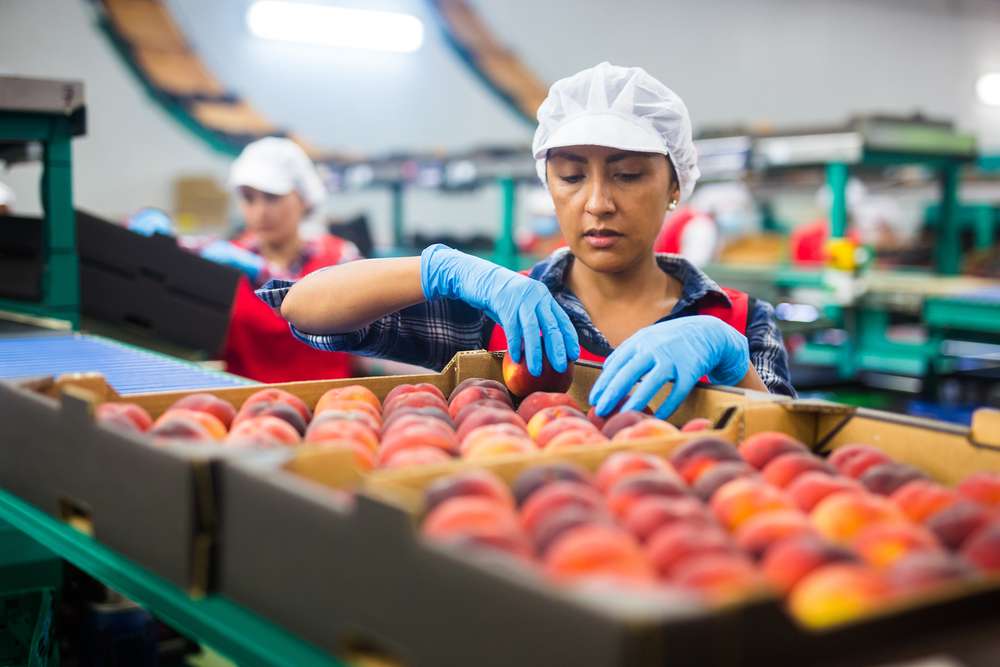Food packaging in the United Kingdom
Explore the essential role of packaging workers in the food industry. Learn about the skills required, the importance of safety and quality control, and how these professionals contribute to the efficiency of packaging operations. Discover the various career opportunities within the field and how the demand for skilled packaging workers is increasing as the food industry grows.

Explore the vital role of packaging workers in the food industry and their impact on product quality
Packaging workers are fundamental to the food industry, serving as the final checkpoint before products reach retail shelves and consumers. Their work directly influences product quality, shelf life, and safety. In the United Kingdom, where food standards are rigorously maintained, packaging workers ensure that items are properly sealed, labeled, and protected from contamination. They operate machinery, conduct quality checks, and monitor production lines to prevent defects. Their attention to detail helps reduce food waste, maintain brand reputation, and protect public health. The impact of their work extends beyond the factory floor, as properly packaged food maintains freshness during transportation and storage, ultimately delivering value to consumers.
Uncover the key responsibilities of packaging workers and how they ensure the safe delivery of food products
The responsibilities of food packaging workers encompass a wide range of tasks that require precision and consistency. Primary duties include operating packaging machinery, inspecting products for defects, and ensuring compliance with food safety regulations. Workers must verify that packaging materials are appropriate for the product type, check expiration dates, and confirm that labels contain accurate information. They monitor equipment performance, perform routine maintenance checks, and report any malfunctions promptly. Hygiene protocols are strictly followed, including wearing protective clothing, sanitizing work areas, and adhering to contamination prevention measures. Documentation is another critical aspect, as workers record batch numbers, production times, and quality control results. These combined responsibilities create a comprehensive system that safeguards food products throughout the packaging process.
Learn about the skills and qualifications needed to succeed as a food packaging worker
Succeeding as a food packaging worker requires a combination of practical skills, personal attributes, and sometimes formal qualifications. Manual dexterity and hand-eye coordination are essential for handling products and operating machinery efficiently. Attention to detail ensures that quality standards are consistently met and defects are identified quickly. Physical stamina is important, as the role often involves standing for extended periods and performing repetitive tasks. Basic numeracy and literacy skills enable workers to read instructions, complete documentation, and understand production targets. While formal qualifications are not always mandatory, certificates in food safety and hygiene are highly valued and sometimes required. Familiarity with Health and Safety regulations demonstrates professional competence. Teamwork and communication skills facilitate smooth operations within production environments. Adaptability and willingness to learn new machinery or processes enhance career progression opportunities.
Understanding the food packaging industry landscape in the United Kingdom
The United Kingdom’s food packaging industry is a significant component of the broader food manufacturing sector, employing thousands of workers across diverse facilities. From large-scale production plants operated by multinational corporations to smaller regional processors, the industry spans various food categories including fresh produce, meat products, bakery items, and ready meals. Technological advancements continue to reshape packaging operations, with automation and digital monitoring systems becoming increasingly prevalent. However, human workers remain essential for quality oversight, problem-solving, and tasks requiring judgment and flexibility. The industry faces ongoing challenges including sustainability concerns, with growing emphasis on eco-friendly packaging materials and waste reduction. Regulatory frameworks governing food safety and labeling standards maintain high operational requirements. Employment patterns reflect seasonal variations in food production, with peak periods during harvest seasons and holiday periods creating temporary staffing needs.
The importance of quality control in food packaging operations
Quality control represents a cornerstone of food packaging operations, ensuring that products meet regulatory requirements and consumer expectations. Packaging workers participate in multi-stage inspection processes that begin with incoming materials and continue through final product dispatch. Visual inspections identify packaging defects such as improper seals, damaged containers, or incorrect labeling. Weight checks verify that products contain the stated quantity, while metal detectors and x-ray systems screen for foreign objects. Temperature monitoring ensures that chilled and frozen products remain within safe ranges throughout packaging. Traceability systems link each packaged unit to its production batch, enabling rapid response if quality issues arise. Workers document inspection results and alert supervisors to any deviations from standards. This comprehensive approach to quality control protects consumers, maintains regulatory compliance, and upholds the reputation of food manufacturers across the United Kingdom.
Health and safety considerations in food packaging environments
Food packaging facilities operate under strict health and safety protocols designed to protect both workers and consumers. Personal protective equipment including hairnets, gloves, aprons, and safety footwear is mandatory in most operations. Hand washing stations and sanitizing procedures prevent cross-contamination between different production areas. Machinery guarding and emergency stop mechanisms reduce the risk of workplace injuries. Regular training sessions educate workers about hazard identification, safe operating procedures, and emergency response protocols. Temperature-controlled environments require appropriate clothing and scheduled breaks to prevent heat stress or cold exposure. Ergonomic considerations address the repetitive nature of packaging tasks, with workstation designs aimed at reducing strain injuries. Incident reporting systems encourage workers to communicate safety concerns promptly. These combined measures create safer working conditions while maintaining the hygiene standards essential to food production.




